

Indigenous Knowledge. Connecting to nature. Climate Justice. Inequities. Youtube. If we don't stop climate change. Celsius to Fahrenheit conversion (°C to °F) How global warming stacks up. Global Temperature Anomalies from 1880 to 2020. Ideas you can implement right now. What do garbage trucks do with garbage? - Mystery Science. Common Misconceptions & Skeptics. CLIMATE 101 with BILL NYE. How Much Hotter Is Your Hometown Than When You Were Born? By NADJA POPOVICH, BLACKI MIGLIOZZI, RUMSEY TAYLOR, JOSH WILLIAMS and DEREK WATKINS Climate modelling by Climate Impact Lab Additional design and development by Troy Griggs. Climate Change 101 with Bill Nye. Ae winter2019 2020. The School of Environmental Leadership - Short Stories on Climate Change by 10th Grade MarinSEL Students. As part of their 10th Grade English class, MarinSEL students crafted narratives on climate change.
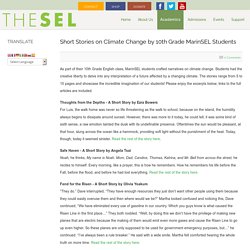
Students had the creative liberty to delve into any interpretation of a future affected by a changing climate. The stories range from 5 to 15 pages and showcase the incredible imagination of our students! Please enjoy the excerpts below; links to the full articles are included. Thoughts from the Depths - A Short Story by Ezra Bowers For Luis, the walk home was never so life threatening as the walk to school, because on the island, the humidity always begins to dissipate around sunset. How to Create and Maintain an Indoor Worm Composting Bin. A worm composting bin, known as a vermicomposter, can be fairly inexpensive and easy to maintain.
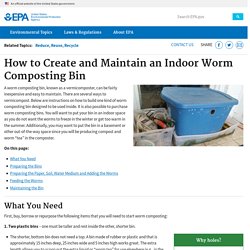
There are several ways to vermicompost. Below are instructions on how to build one kind of worm composting bin designed to be used inside. It is also possible to purchase worm composting bins. Sunrise Movement - We Are The Climate Revolution. Not a Drop to Drink (Not a Drop to Drink, #1) by Mindy McGinnis. Educate: With more students demanding action on climate change, teachers try to keep up on Apple Podcasts. Are We Ready? How We Are Teaching – and Not Teaching – Kids About Climate Change. This story about climate change and education was produced as part of the nine-part series “Are We Ready?
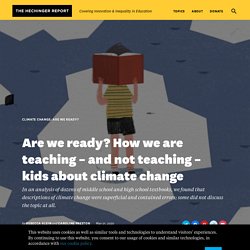
How Schools Are Preparing – and Not Preparing – Children for Climate Change,” reported by HuffPost and The Hechinger Report, a nonprofit, independent news organization focused on inequality and innovation in education. Science textbooks used in Florida and Texas call climate change “one of the most debated issues in modern science.” A Texas science textbook for seventh graders says “scientists hypothesize” that the increase in carbon dioxide “has contributed to the recent rise in global temperature.” A high school social studies book, also used in Texas, says of rising temperatures, “Some critics say that this warming is just part of the Earth’s natural cycle,” though, in truth, there’s overwhelming consensus among climate scientists that the current warming is due to human activities. What people get wrong about climate change.
CLEAN. How Much Energy is on my Plate? Contributed by Lane Seeley, Seattle Pacific University and Karin Kirk, SERC This activity addresses leads students through a sequence of activities that highlight the embodied energy that is necessary to produce various types of food.
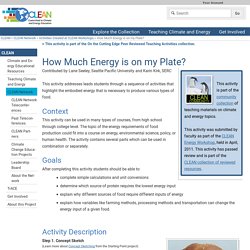
Context This activity can be used in many types of courses, from high school through college level. Untitled. The Lifestyle Project. Karin Kirk, Montana State University/SERC and John J.
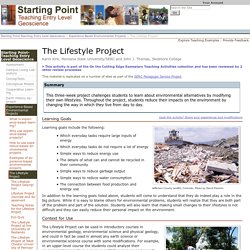
Thomas, Skidmore College This activity was selected for the On the Cutting Edge Exemplary Teaching CollectionResources in this top level collection a) must have scored Exemplary or Very Good in all five review categories, and must also rate as “Exemplary” in at least three of the five categories. The YEARS Project.
EcoSense for Living. Fake News vs. Real News: Determining the Reliability of Sources. Video and a related lesson plan from TEDEd. Update: Please also see our new, 2017 lesson, Evaluating Sources in a ‘Post-Truth’ World: Ideas for Teaching and Learning About Fake News _________ How do you know if something you read is true? Why should you care? We pose these questions this week in honor of News Engagement Day on Oct. 6, and try to answer them with resources from The Times as well as from Edutopia, the Center for News Literacy, TEDEd and the NewseumEd.
Lesson Plans – Climate Change Education Across the Curricula, Across the Globe. Earth Day activities for Grades 3-5. List: The 20 largest wildfires in California history. The Kincade Fire, threatening towns in Sonoma County and causing major evacuations, expanded to 66,231 acres as of Monday morning.
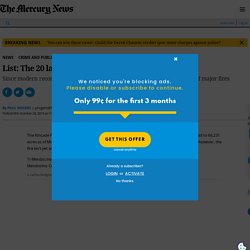
That’s more than twice the size of the city of San Francisco. So far, however, the fire isn’t yet among the 20 largest in modern California history. An introduction to climate change in 60 seconds. NASA's Earth Minute: Earth Has a Fever. Ten Clear Indicators Our Climate is Changing. What is climate change? Climate change is any long-term alteration in average weather patterns, either globally or regionally.
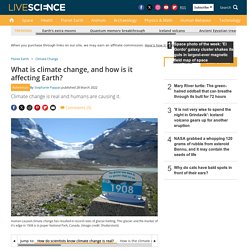
As this broad definition suggests, climate change has occurred many times in Earth's history, and for many reasons. The changes in global temperature and weather patterns seen today, however, are caused by human activity. Climate change could make blizzards more intense, scientists say. What is climate change? A really simple guide.